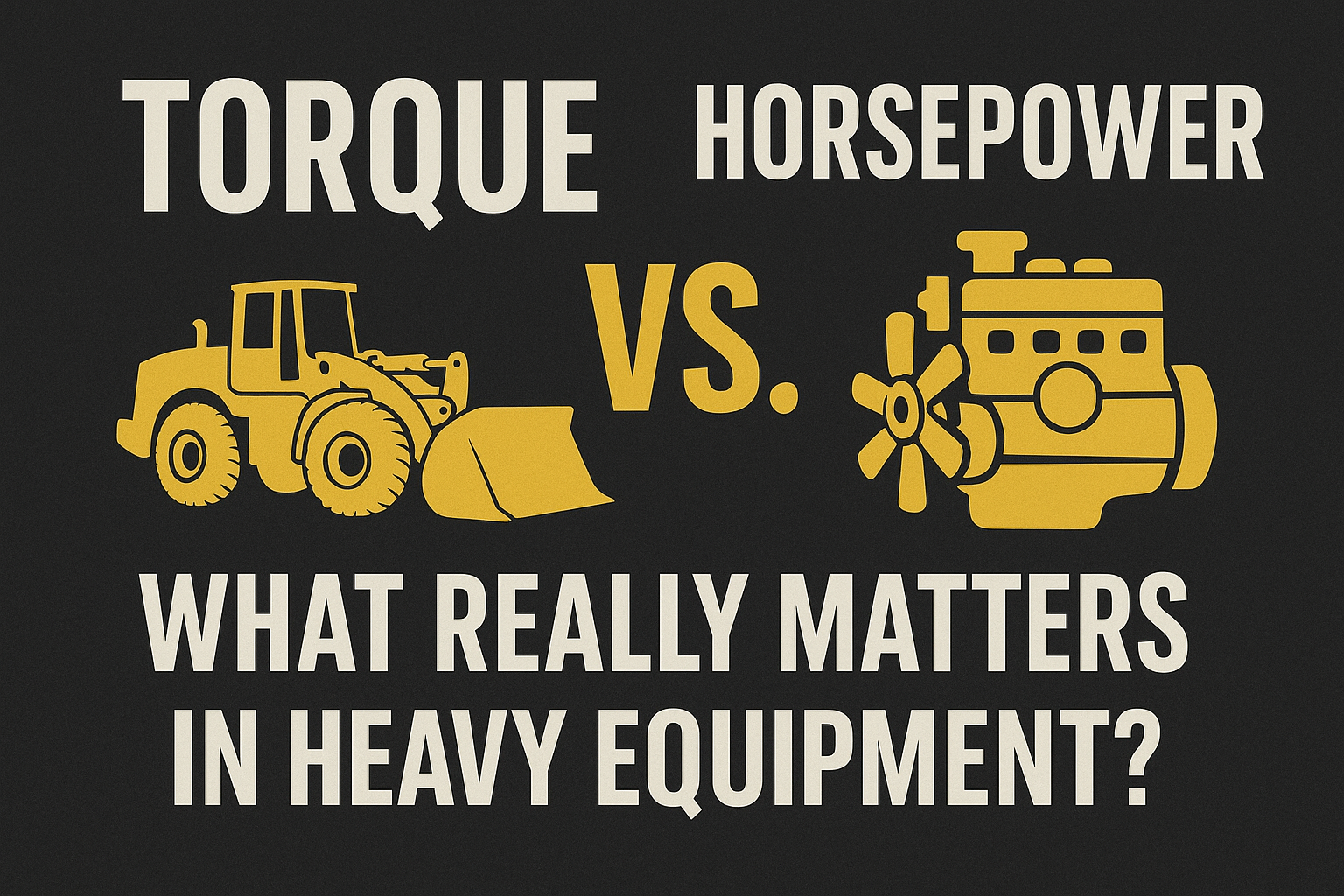Iron Insights
Torque vs. Horsepower: What Really Matters in Heavy Equipment?
If you’ve spent any time around diesel engines, you’ve probably heard operators argue about torque and horsepower. Some swear by torque — “That’s what gets the bucket moving.” Others point to horsepower — “That’s what keeps it moving.” So, which one really matters in heavy equipment?
Let’s break it down in plain iron terms.
Understanding the Basics
Horsepower is a measure of how much work an engine can do over time.
Torque is a measure of the rotational force the engine produces.
Think of torque as the muscle and horsepower as the stamina. Torque gets you moving — horsepower keeps you going. Both are linked by a simple formula:
Horsepower = (Torque × RPM) ÷ 5252
That means the same engine can have different horsepower outputs depending on how fast it spins (RPM).
Torque: The Operator’s Best Friend
In heavy equipment, torque is what you feel when you push into a pile or start hauling a load. It’s that deep, steady grunt that lets a dozer push through clay or an excavator tear through packed soil.
Diesel engines are famous for delivering high torque at low RPM, which is exactly what you want in heavy-duty work. More torque means:
- Better tractive effort (pushing and pulling power)
- Easier operation in tough terrain or deep cuts
- Less gear hunting under load
That’s why most operators value torque over sheer horsepower — because in the dirt, torque gets the job done.
Horsepower: The Speed and Efficiency Factor
Horsepower still matters, though. Machines that need to move fast or power multiple systems at once — like graders, loaders, and haul trucks — rely on horsepower to maintain efficiency.
Higher horsepower means:
- Faster hydraulic cycle times
- Quicker travel speeds
- Better overall productivity on lighter loads
If torque is the grunt, horsepower is the hustle. A machine with too little horsepower may feel powerful at first but bog down when you try to multitask — like swinging the boom, tracking, and lifting all at once.
Finding the Right Balance
Manufacturers tune their machines to balance torque and horsepower for their intended use:
- Excavators and dozers: prioritize torque for digging and pushing power
- Loaders and haul trucks: need more horsepower for speed and load cycling
- Graders and skid steers: blend both for precision and responsiveness
That’s why comparing two machines just by horsepower can be misleading. The real test is how effectively that power is applied through the transmission, hydraulics, and load management systems.
The Operator’s Takeaway
When you’re looking at specs, don’t get distracted by big horsepower numbers. Instead, ask:
- At what RPM does it hit peak torque?
- How flat is the torque curve? (A flatter curve means strong power across a wider RPM range.)
- How does the machine feel under load?
In heavy equipment, usable power beats bragging rights every time.
Bottom Line
Horsepower sells engines.
Torque moves dirt.
The smartest operators know that it’s not one or the other — it’s how they work together that separates a good machine from a great one.

